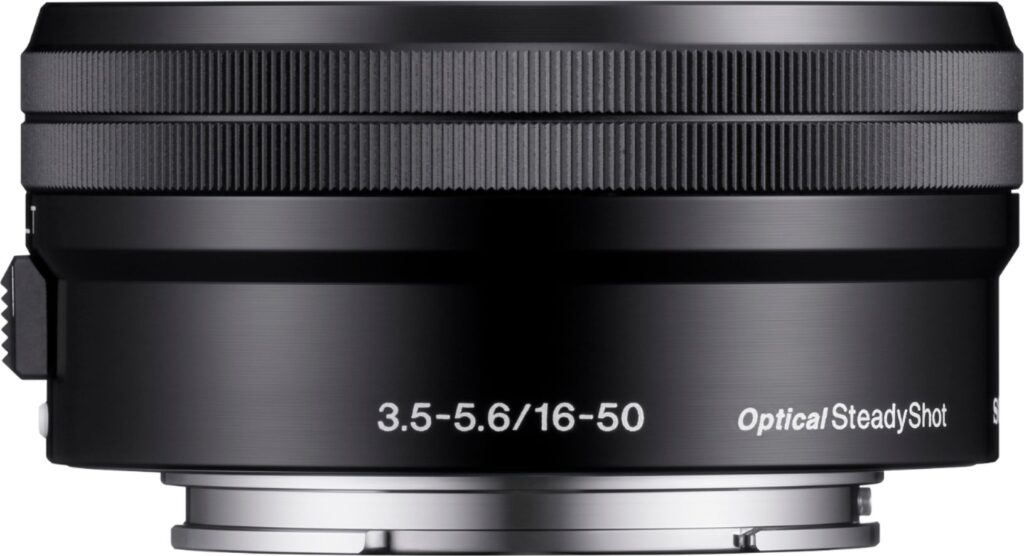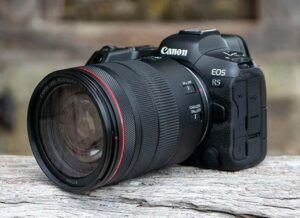Comprehensive Guide to the Sony SELP-1650 Lens

If you’re interested in photography, whether as a hobby or profession, you’ve likely come across various lenses that promise to enhance your pictures. One such lens is the Sony SELP-1650. This lens is popular among photographers for its versatility and compact design. But what exactly makes it so special? In this guide, we will explore every aspect of the Sony SELP-1650 lens, breaking it down so that even a 5-year-old can understand.
What is the Sony SELP-1650 Lens?
The Sony SELP-1650 lens is a type of zoom lens designed for Sony E-mount cameras. It’s called a zoom lens because it can change its focal length, allowing you to get closer or further away from your subject without physically moving. This lens covers a focal length range from 16mm to 50mm, making it versatile enough for various types of photography, from wide-angle shots to portraits. Whether you’re photographing landscapes or taking a close-up of your pet, this lens can do it all.
Why is the Sony SELP-1650 Lens Special?
There are many reasons why the Sony SELP-1650 lens is considered special. First, it is incredibly compact and lightweight, which means it won’t weigh you down when you’re out and about. Despite its small size, it delivers excellent image quality. The lens also features Optical SteadyShot, which helps to reduce blurriness in photos by stabilizing the image. This is particularly useful if you’re shooting without a tripod or in low light conditions.
Understanding Focal Length
Comprehensive Guide to the Sony SELP-1650 Lens Focal length is a term you’ll hear a lot when talking about lenses. In simple terms, the focal length of a lens determines how much of a scene the lens can capture. For example, a shorter focal length like 16mm is great for wide-angle shots, which means it can capture more of the scene in front of you. On the other hand, a longer focal length like 50mm is better for zooming in on a specific subject. The Sony SELP-1650 lens covers a range of focal lengths from 16mm to 50mm, so it’s like having multiple lenses in one.
Zooming In and Out
One of the coolest features of the Sony SELP-1650 lens is its ability to zoom in and out. When you zoom in, you’re getting closer to your subject without moving. This is perfect for capturing details or focusing on a specific part of your scene. Zooming out, on the other hand, allows you to capture a wider view, which is great for landscapes or group photos. The zoom mechanism in this lens is powered, which means it operates smoothly and silently—perfect for video recording.
What is Optical SteadyShot?
Optical SteadyShot is a technology used in the Sony SELP-1650 lens to reduce the shakiness in your photos and videos. Imagine you’re trying to take a picture, but your hands are a little shaky. Without stabilization, the picture might come out blurry. Optical SteadyShot helps to prevent that by compensating for the small movements of your hand, making your photos sharp and clear. This feature is especially helpful in low-light situations where any tiny movement could cause blur.
Image Quality
Image quality is one of the most important factors when choosing a lens. The Sony SELP-1650 lens delivers sharp images with good color reproduction. It has a special coating on the lens elements that reduces glare and ghosting, which can happen when light bounces around inside the lens. This means your photos will have better contrast and clarity, even in challenging lighting conditions. Whether you’re shooting in bright sunlight or a dimly lit room, this lens performs well.
Aperture and Light
Aperture refers to the opening in the lens that allows light to enter the camera. The size of this opening is measured in f-stops. The Sony SELP-1650 lens has a variable aperture that ranges from f/3.5 to f/5.6, depending on the focal length. At 16mm, the maximum aperture is f/3.5, and at 50mm, it’s f/5.6. A larger aperture (lower f-stop number) lets in more light, which is useful for low-light situations or when you want to create a blurred background effect. However, a smaller aperture (higher f-stop number) increases the depth of field, making more of the scene in focus.
How to Use the Sony SELP-1650 Lens
Using the Sony SELP-1650 lens is straightforward. First, make sure it’s securely attached to your Sony E-mount camera. You can easily switch between different focal lengths by turning the zoom ring on the lens. If you want to get closer to your subject, turn the ring to the right to zoom in. To capture a wider scene, turn it to the left to zoom out. The lens also has a power zoom feature, which allows you to zoom smoothly with just the touch of a button—great for recording videos.
Best Photography Situations for the SELP-1650 Lens
The Sony SELP-1650 lens is versatile, meaning it can be used in various situations. Here are some examples:
- Landscape Photography: The wide 16mm focal length is perfect for capturing vast landscapes. Whether you’re photographing a mountain range or a city skyline, this lens can capture it all.
- Portrait Photography: The 50mm focal length is ideal for portraits. It allows you to focus on your subject while creating a pleasing background blur.
- Street Photography: Its compact size makes it easy to carry around, and the zoom range is perfect for capturing candid moments in busy streets.
- Travel Photography: The combination of a wide and zoomed-in focal length makes this lens a great travel companion. It’s like having multiple lenses in one compact package.
- Video Recording: The smooth power zoom and Optical SteadyShot make it ideal for recording videos, whether you’re capturing family moments or creating a vlog.
Tips for Getting the Best Results
To get the most out of your Sony SELP-1650 lens, keep these tips in mind:
- Use Optical SteadyShot: Always make sure the Optical SteadyShot is turned on, especially when shooting in low light or without a tripod.
- Experiment with Different Focal Lengths: Don’t be afraid to play around with the zoom. Try different focal lengths to see how they affect your composition.
- Pay Attention to Aperture: Use a larger aperture (lower f-stop) for portraits and low light, and a smaller aperture (higher f-stop) for landscapes and when you need more of the scene in focus.
- Keep the Lens Clean: Dust and smudges can affect image quality, so regularly clean the lens with a soft cloth.
- Practice Makes Perfect: The more you use the lens, the more comfortable you’ll become with its features. Try taking photos in different lighting conditions and settings to fully understand what this lens can do.
Pros and Cons of the Sony SELP-1650 Lens
No lens is perfect, and the Sony SELP-1650 is no exception. Here are some pros and cons to consider:
Pros:
- Compact and lightweight design
- Versatile zoom range from 16mm to 50mm
- Optical SteadyShot for image stabilization
- Good image quality with sharpness and color accuracy
- Smooth and silent power zoom for video recording
Cons:
- Variable aperture can be limiting in low light
- Image corners can be softer at wider focal lengths
- Not as fast (wide aperture) as some prime lenses
Who Should Buy the Sony SELP-1650 Lens?
The Sony SELP-1650 lens is ideal for beginners and intermediate photographers who want a versatile lens that can handle a variety of situations. If you’re looking for a lens that’s easy to carry around and offers good performance for both photos and videos, this lens is a great choice. It’s also perfect for travelers who need a lightweight lens that doesn’t compromise on quality.
Conclusion
The Sony SELP-1650 lens is a fantastic all-around lens that offers great value for its price. Its combination of compact design, versatile zoom range, and Optical SteadyShot makes it a popular choice among photographers. Whether you’re a beginner looking to expand your skills or a seasoned photographer needing a reliable travel lens, the Sony SELP-1650 has something to offer. With the tips and information provided in this guide, you should now have a better understanding of how to make the most of this lens. Happy shooting!








